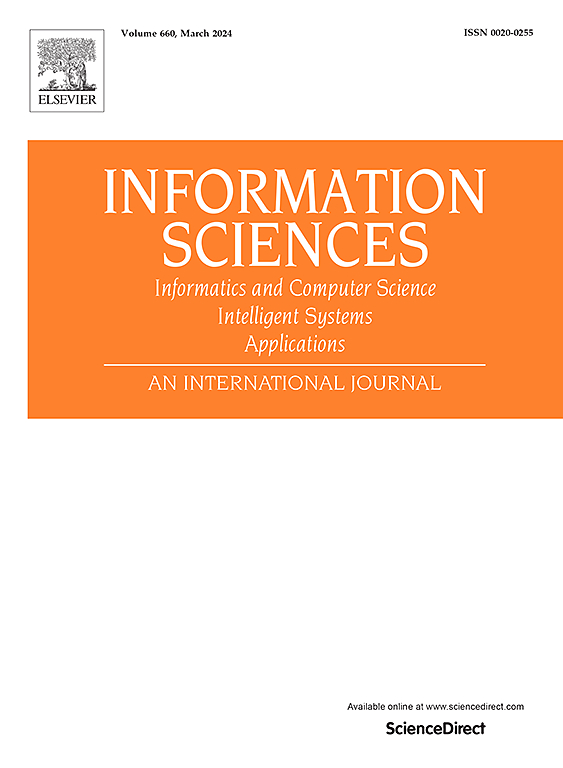Deep dual contrastive learning for multi-view subspace clustering
IF 6.8
1区 计算机科学
0 COMPUTER SCIENCE, INFORMATION SYSTEMS
引用次数: 0
Abstract
Multi-view subspace clustering (MVSC) aims to learn a consistent shared self-representation by utilizing the consistency and complementarity of all views, numerous MVSC algorithms have attempted to obtain the optimal representation directly from raw features. However, they might overlook the noisy or redundant information in raw feature space, resulting in learning suboptimal self-representation and poor performance. To address this limitation, an intuitive idea is introducing deep neural networks to eliminate the noise and redundancy, yielding a potential embedding space. Nevertheless, existing deep MVSC methods merely focus on either the embeddings or self-expressions to explore the complementary information, which hinders subspace learning. In this paper, we present a deep multi-view dual contrastive subspace clustering framework to exploit the complementarity to learn latent self-representations effectively. Specifically, multi-view encoders are constructed to eliminate noise and redundancy of the original features and capture low-dimensional subspace embeddings, from which the self-representations are learned. Moreover, two diverse specific fusion methods are conducted on the latent subspace embeddings and the self-expressions to learn shared self-representations, and dual contrastive constraints are proposed to fully exploit the complementarity among views. Extensive experiments are conducted to verify the effectiveness of the proposed method.
多视图子空间聚类的深度对偶对比学习
多视图子空间聚类(MVSC)旨在利用所有视图的一致性和互补性来学习一致的共享自表示,许多MVSC算法都试图直接从原始特征中获得最优表示。然而,它们可能会忽略原始特征空间中的噪声或冗余信息,从而导致学习的次优自表示和较差的性能。为了解决这一限制,一个直观的想法是引入深度神经网络来消除噪声和冗余,从而产生一个潜在的嵌入空间。然而,现有的深度MVSC方法只关注嵌入或自我表达来探索互补信息,这阻碍了子空间的学习。本文提出了一种深度多视图对偶对比子空间聚类框架,利用其互补性来有效地学习潜在的自表征。具体而言,构建多视图编码器以消除原始特征的噪声和冗余,并捕获低维子空间嵌入,从中学习自表示。此外,对潜在子空间嵌入和自表达进行了两种不同的具体融合方法,以学习共享的自表示,并提出了双重对比约束,以充分利用视图之间的互补性。大量的实验验证了所提方法的有效性。
本文章由计算机程序翻译,如有差异,请以英文原文为准。
求助全文
约1分钟内获得全文
求助全文
来源期刊

Information Sciences
工程技术-计算机:信息系统
CiteScore
14.00
自引率
17.30%
发文量
1322
审稿时长
10.4 months
期刊介绍:
Informatics and Computer Science Intelligent Systems Applications is an esteemed international journal that focuses on publishing original and creative research findings in the field of information sciences. We also feature a limited number of timely tutorial and surveying contributions.
Our journal aims to cater to a diverse audience, including researchers, developers, managers, strategic planners, graduate students, and anyone interested in staying up-to-date with cutting-edge research in information science, knowledge engineering, and intelligent systems. While readers are expected to share a common interest in information science, they come from varying backgrounds such as engineering, mathematics, statistics, physics, computer science, cell biology, molecular biology, management science, cognitive science, neurobiology, behavioral sciences, and biochemistry.
 求助内容:
求助内容: 应助结果提醒方式:
应助结果提醒方式:


